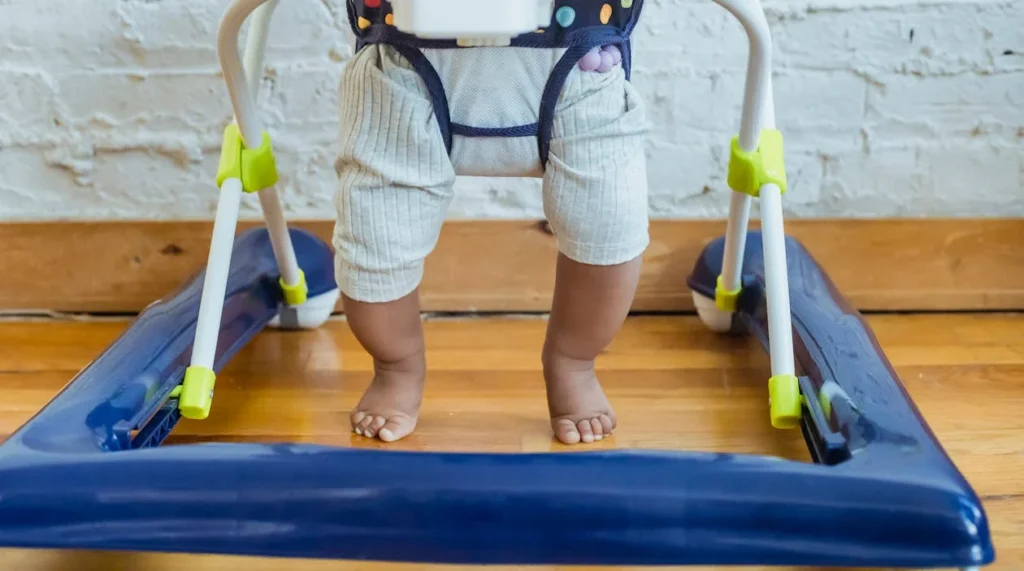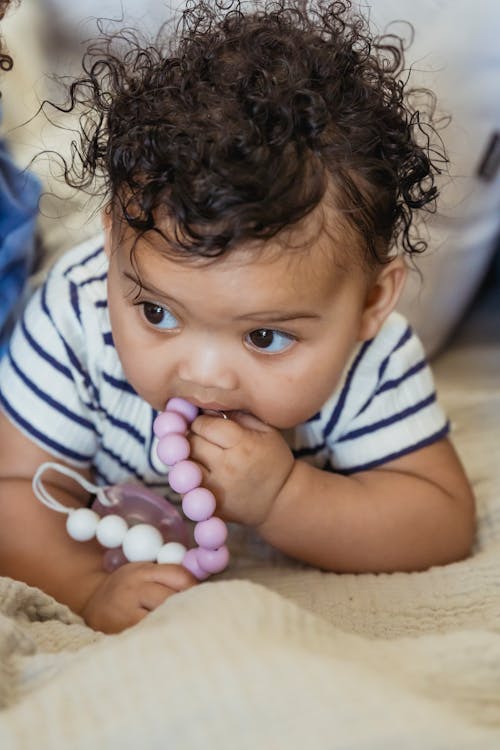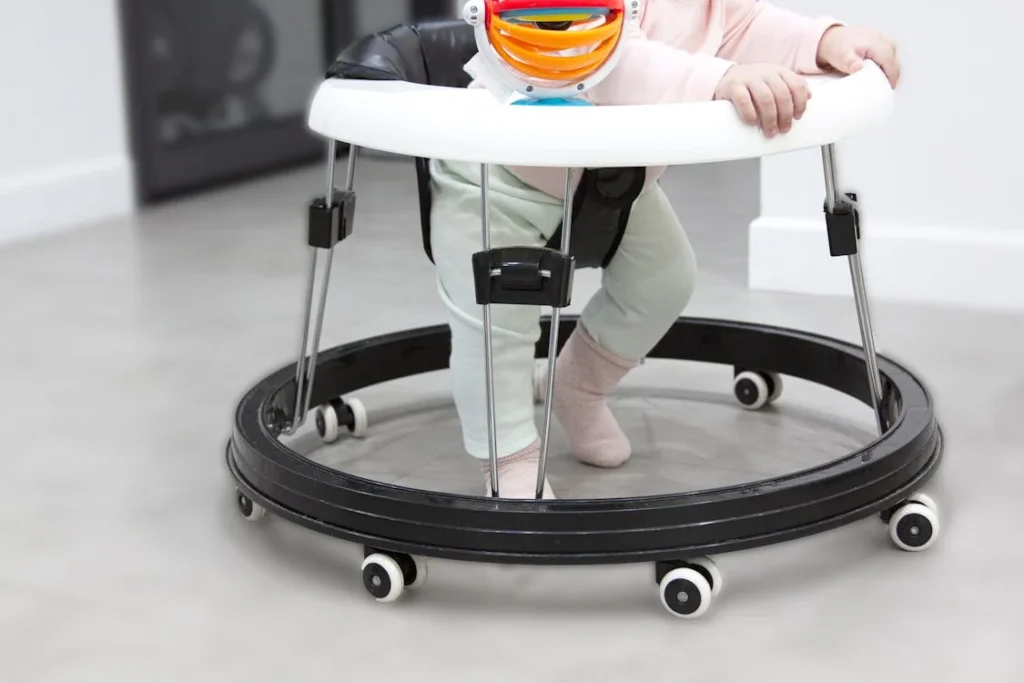For decades, parents have been using baby walkers for their tots, whether to help their baby walk, support them in exploring, provide a safe place to put them to have a moment to themselves or all of the above. These devices usually consist of a frame, wheels, and a seat, and some even come with built-in toys to help keep your baby entertained while they navigate their surroundings.
Table of Contents
What Exactly is a Baby Walker and How Do They Work?

Baby walkers come in many different shapes, sizes, colors, materials, and styles, so there is one for you and your tot. The intended thought behind baby walkers is that they help to support babies while they learn how to walk. The frame acts as a safety barrier, keeping your child balanced, out of reach of certain items, and protected from falls.
The seat is often made of material with two open leg holes for your little one to sit comfortably, as the four to eight wheels usually guide them as they begin scooting around. There has been an ongoing debate on whether or not a baby walker is a good idea. Many people oppose them; others believe these are valuable tools for parents and babies. Regarding child development, there are solid arguments as to why it is and isn’t safe to use a walker. It initially comes down to what you feel would be best for you and your baby.
6 Advantages of Baby Walkers

Let’s focus on the benefits of using a baby walker; there are several reasons why, despite controversy, parents still choose to add a walker to their baby items a-z list.
Here are the top 6 advantages of walkers:
- Standing and walking – The name of a baby walker gives it away. It can help children learn to stand and walk independently (without parents’ help).
- Sense of achievement – When a baby is in a walker, it tends to explore its boundaries, and by doing so, it discovers new things it can do independently. For example, it might go closer or further from certain things, fetch a toy, or find stuff about its body it didn’t know it could do. This all helps to boost its confidence and gives it a sense of accomplishment.
- Freedom – Short and sweet and pretty obvious, many babies love to try to be independent, and almost all are curious. Walkers allow babies to roam freely and go where they want, which means less crying and charades to try to figure out what they want or where they want to be.
- Physical development – Baby walkers encourage muscle development and growth, which helps speed up their walking ability because the body will follow as their muscles grow. Walker also develops physical and emotional development as they become more independent and self-aware.
- Safety first – Many parents think of purchasing a walker because it is a safe way for their children to learn how to take their first steps. Children tend to be impulsive and quite clumsy at this age. Learning to walk could mean grabbing onto potentially dangerous items for support, such as an unsteady chair or tablecloth. Using a walker decreases the likelihood of this happening.
- Builds skills and knowledge – When your child is exploring in their walker, they are physically and mentally active, taking in the new sights and learning things, placements, etc. They also begin to understand the importance of being aware and cautious of certain things, contributing to their cognitive skill development.
What are the Downsides of Baby Walkers?
Although baby walkers can be a beneficial addition to your child’s development, they also come with their own set of concerns.
Here are 4 potential downsides of baby walkers:
- Catch speed – A concern with baby walkers is that because they have easily movable wheels, they can zoom away from parents and caretakers once your tot can navigate the mechanics.
- Stairs – For those with homes with staircases or even a few steps, it can be nerve-wracking for your child to move freely to these dangerous spots. Numerous incidents have occurred involving children falling down stairs with their walkers. If you are considering purchasing a walker and have easily accessible stairs, it would be a good idea to install a protective babyproof gate.
- Poor development – In some cases, children in their walkers for extensive periods or too consistently can cause poor leg and foot development.
- Delayed walking – As mentioned above, it can have opposite effects if children are in their walkers for a great deal. Instead of encouraging independent walking and standing
FAQ Section
- At what age can children start using walkers?
There is no set age for a baby to use a walker, but professionals suggest waiting until around six months.
- What is the best kind of walker to buy?
When purchasing a walker, consider it has a broad bottom base for support and movement, a sturdy and comfortable sitting place, and a wheel lock mechanism. Avoid oddly shaped ones; stick with the traditional round or square shape. Also, make sure the wheels are of good quality.
- When should my child stop using their walker?
Once again, there is no definite answer, but it is recommended that your child stops using a walker when they can walk completely unassisted.
The Advantages of Baby Walkers

Walkers are no doubt a controversial piece of baby equipment. But in the end, it’s up to you as a parent to decide if it’s the right choice for you and your little one. Despite the disadvantages of baby walkers, the advantages are still relevant, and they can boost your baby’s ability to start their walking journey. So, when going through your baby items a-z list, add a walker by “W”!


